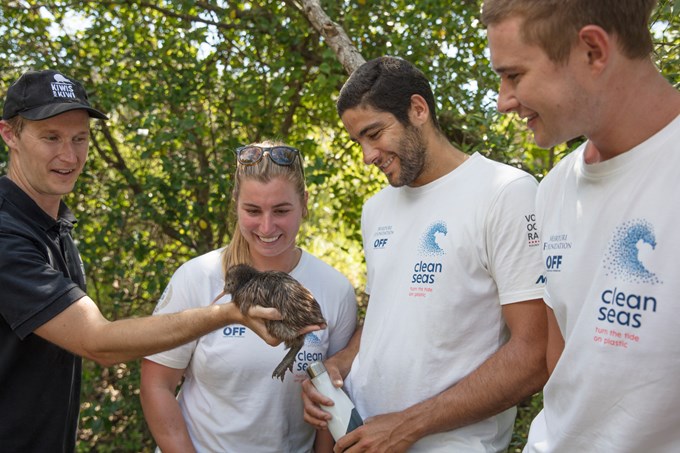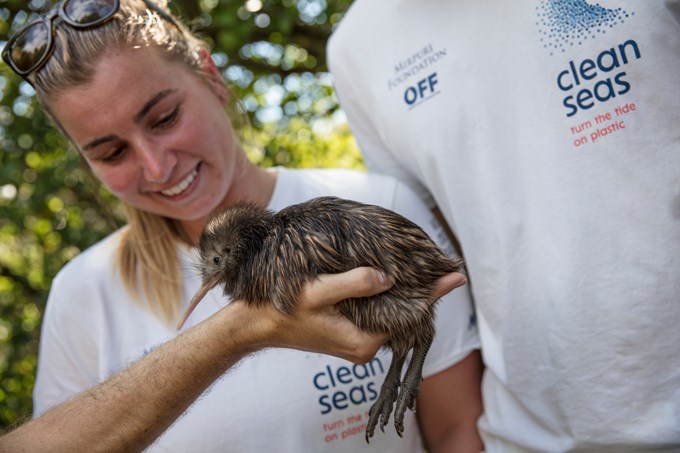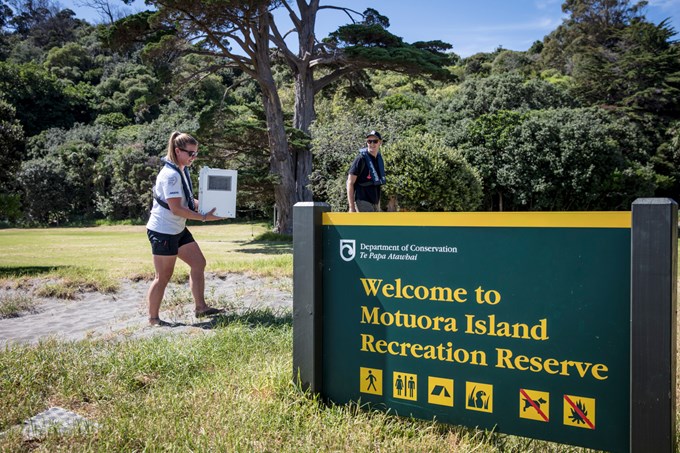A couple of kiwi chicks have left a lasting impression on a group of sailors on a mission to Turn the Tide on Plastics, as they sail around the world competing in the Volvo Ocean Race.
Turn the Tide on Plastics crew members Bianca Cook (a New Zealander), and her crewmates Bernardo Freitas and Lucas Chapman, spent a day on Motuora Island, a kiwi sanctuary crèche in Auckland’s Hauraki Gulf, assisting with the release of two three-week-old kiwis.
The team was also given the chance to name one of the kiwi chicks, which weighed in at 447 grams on its release day.
“It was an amazing experience, something that was very special to me and my team,” says Cook.
“We called the kiwi mōhio, the Maori word for wisdom, which is very close to us because the mascot for the Volvo Ocean Race is an albatross called wisdom.”
Auckland Tourism, Events and Economic Development (ATEED) General Manager Destination, Steve Armitage, says as New Zealand’s largest marine park, Hauraki Gulf is an important part of Auckland’s appeal as a place to visit.
“ATEED puts kaitiakitanga or guardianship, at the core of what we do. That’s why working in partnerships with DOC, Kiwis for Kiwi, mana whenua, and organisations like Seacleaners and Sustainable Coastlines is so important for us,” he says.

"It’s great to have the opportunity to give a team like Turn the Tide on Plastics, which is focussed on the environment, an update on some of Auckland's great work on sustainability, as well as showing them the natural wonders that our region offers to visitors.”
Operation Nest Egg
The kiwis were released as part of Operation Nest Egg, a progamme managed by charity organisation Kiwis for kiwi, in partnership with the Department of Conservation (DOC).
The programme involves collecting eggs from the wild, incubating and hatching them at facilities like Auckland Zoo, then transferring them to crèches like at Motuora Island, where they stay for a year or so until they are around 1 kg in weight and able to fend off most predators.
They are then transferred back to where they were found as eggs, or are used to start new kiwi populations on pest-free islands in the Gulf.
Motuora Island is managed by the Department of Conservation (DOC) in partnership with Motuora Restoration Society. There are no rats, stoats, possums or other introduced predators on the island, making it safe for kiwi and other threatened native birds.
It is one of 44 pest-free islands in the Hauraki Gulf Marine Park. DOC and Auckland Council are working to keep these native wildlife sanctuaries free of introduced predators and weeds.
Those travelling to the island sanctuaries are reminded to check that they're not transporting any predators (including cats and dogs), pests or weed seeds on their boat, kayak, yacht or any other vessel.



